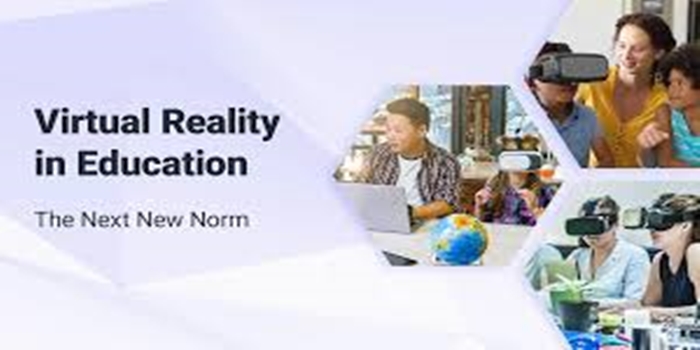In this article, we explained the meaning of virtual reality in education, the benefits, the features, and we also outlined the examples.
Definition
In education, virtual reality (VR) refers to the use of technology to create immersive, interactive learning experiences that transport students to different virtual worlds and allow them to explore, experiment, and engage with concepts in new ways. It goes beyond traditional learning methods by providing a “learn by doing” approach, fostering deeper understanding and engagement.
Features of VR in Education:
Immersive and Interactive Experiences:
VR creates a simulated environment that feels real, allowing students to interact with objects and scenarios as if they were physically present.
Enhanced Engagement and Motivation:
The captivating nature of VR can spark curiosity, increase motivation, and make learning more enjoyable.
Personalized Learning:
VR can be adapted to individual learning styles and needs, providing customized feedback and guidance.
Accessible and Inclusive:
VR can overcome barriers to learning due to location, physical disabilities, or socioeconomic status, providing equal access to education.
Practical Applications:
VR allows for virtual field trips, simulations, and interactive lessons across various subjects, from history to science.
Examples of VR in Education:
Virtual Field Trips:
Students can explore ancient Rome, the Amazon rainforest, or even the human body without leaving the classroom.
Simulations:
VR can simulate complex processes like surgery or flight, providing hands-on training and practice.
Interactive Lessons:
Students can interact with 3D models, manipulate virtual objects, and participate in interactive discussions within the VR environment.
Social Skills Training:
VR can create scenarios for practicing social interactions, helping students develop empathy and communication skills.
Special Education Support:
VR can be used to create personalized learning environments for students with special educational needs and disabilities, providing tailored support and instruction.
Benefits of VR in Education:
Immersive Learning:
VR transports students to virtual environments, making learning more engaging and memorable.
Simulation and Experiential Learning:
Students can participate in simulated experiments, historical events, or virtual field trips.
Visualization of Complex Concepts:
VR helps visualize abstract concepts, making them easier to understand.
Personalized Learning:
VR allows for customization of educational content to individual student needs.
Enhanced Engagement:
The interactive nature of VR keeps students actively involved in the learning process.
Accessibility and Inclusivity:
VR can address accessibility issues for students with disabilities and create inclusive learning environments.
Remote and Distance Learning:
VR facilitates collaborative learning and distance education, connecting students across geographical barriers.
Cultural and Global Understanding:
VR allows students to experience different cultures, historical periods, and locations, fostering global awareness.
Skill Development:
VR promotes skills like problem-solving, creativity, and collaboration.
Conclusion
Virtual reality (VR) in education provides immersive, interactive learning experiences by simulating real-world scenarios and allowing students to interact with digital objects and characters. This technology enhances engagement, improves comprehension, and fosters skills like creativity and problem-solving, particularly for complex concepts and distance learning. VR can also address accessibility challenges and promote cultural understanding.
READ: Virtual Event Planning and Promotion

